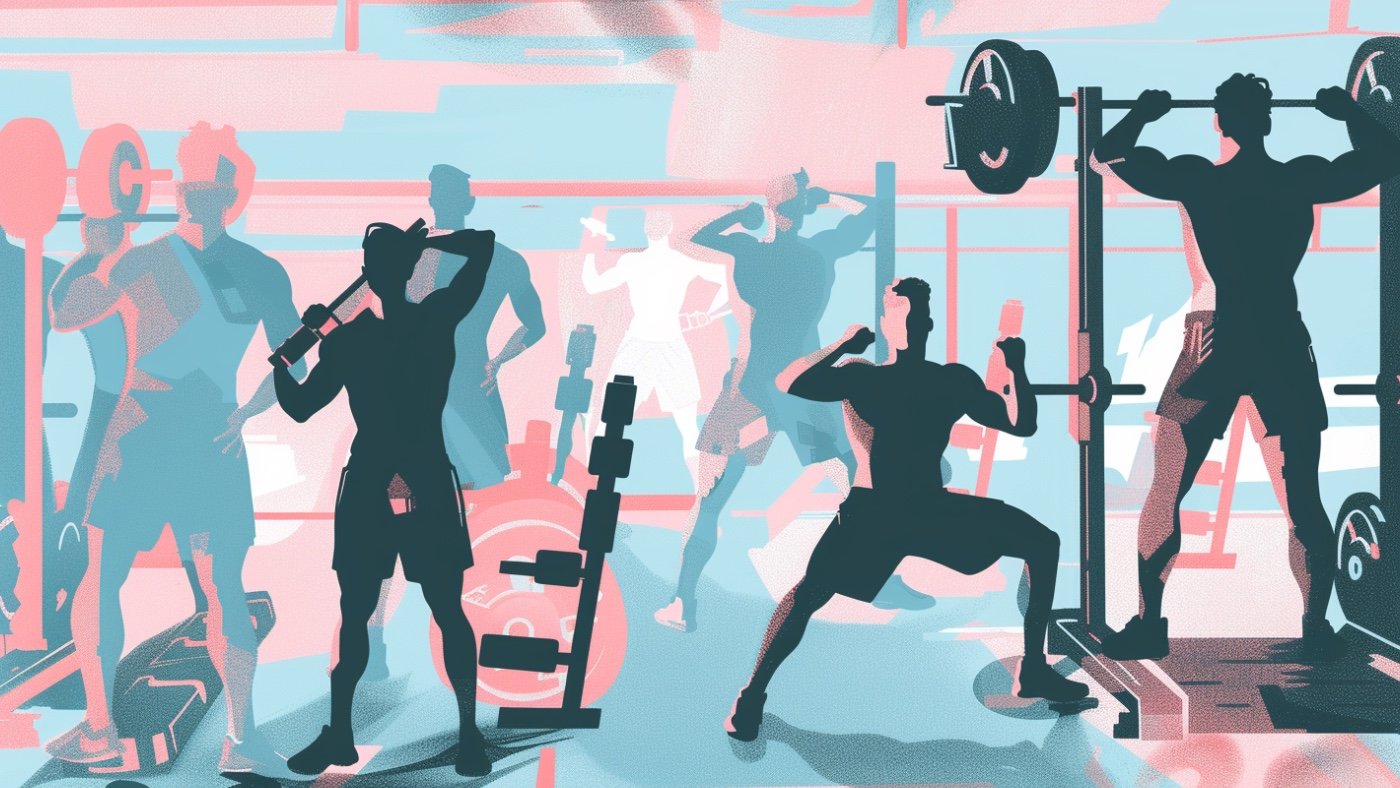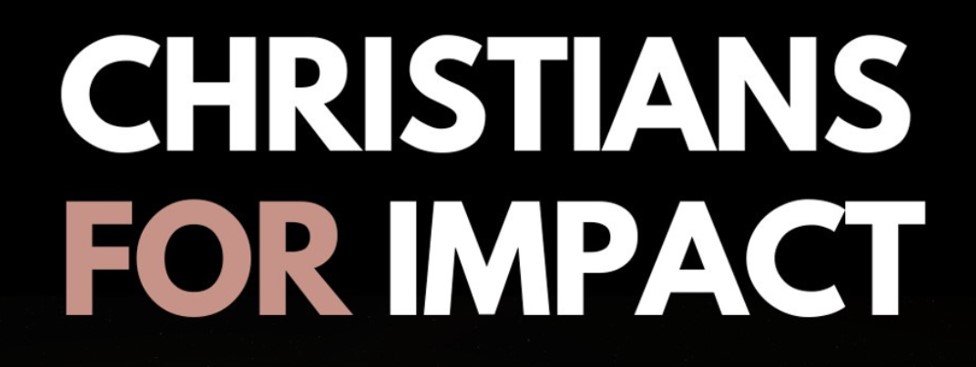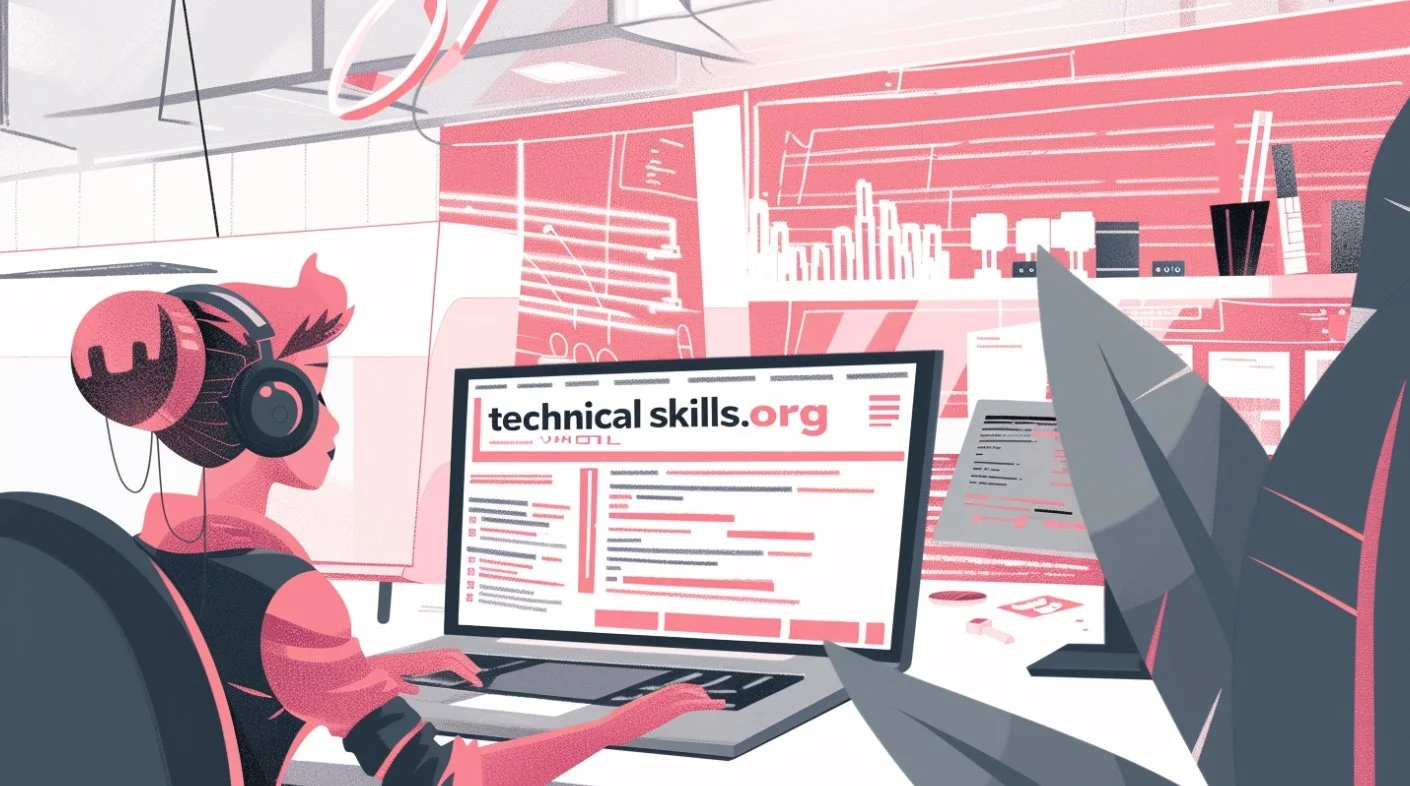
How To Identify Your Personal Strengths
Written October 28 2024
Est. 10-15 minute read
This article draws heavily from 80,000 Hours (see their up-to-date entry here).
Introduction
When it comes to finding a meaningful career, one common approach is to identify our personal strengths and look for paths that match them. In this article, we’ll explore a practical, three-step process for identifying your strengths. We’ll also include some common lists of strengths used by researchers to give you a shared language for recognising your own.
First, though, we want to offer a note of caution about relying too heavily on this "match with strengths" approach. There’s a real risk of limiting ourselves to our current strengths, overlooking the potential God has given us to develop new ones. This risk is especially pressing for who may not yet know what they’re best at—and who, with God’s guidance, have decades ahead to grow and refine their abilities.
So, we encourage asking not only “What are my strengths?” but also “Which strengths are worth building?” After all, our lives are about much more than our personal fulfillment. Our work should also reflect God’s call to serve and bless others. With that in mind, an even better question to ask may be: “What does the world need, and how might I contribute?” This way of thinking can direct us to build skills that will not only support a sustainable career but also allow us to serve God and others meaningfully.
Clarifying our strengths is still a valuable part of planning our path, especially if we’ve already had some work experience. However, we often think of our strengths in abstract terms. For example, when God called Moses to lead Israel out of Egypt, he hesitated and doubted his ability to speak well and lead. But God saw deeper potential in Moses, preparing him to rely on His strength rather than focusing on perceived weaknesses. Like Moses, when we assess our own strengths, we should trust God to reveal how they might serve His purposes, even in ways we don’t initially expect. Identifying our strengths is useful, whether we’re seeking a new role or wanting to make our current work more fulfilling. It’s natural to focus on weaknesses, but building a meaningful life and career is often more about using our God-given strengths and letting Him work through them.
Finally, we hope this reflection on strengths will encourage you to keep seeking purpose for your career. This exercise is one step in our broader approach to career planning. So if you’re ready to reflect on how to have an impactful career, this is a great place to start.
How to use the full process
There are three stages:
Gather feedback and data on bright spots in your work history
Reflect on questions designed to help pinpoint your key strengths
Use research-backed lists of strengths to generate ideas
A short version could involve a quick pass over Step 1, writing one or two paragraphs about two questions from Step 2, and then glancing over Step 3 to see if it further clarifies anything. Or you could spend an afternoon or two really thinking about all of it.
What are strengths?
Here are some criteria for what would constitute a strength in the context of longer-term career planning:
Something that — if you practice — you could become good at, compared to (i) others who have the skill and (ii) your other skills
Something you find enjoyable enough that you might do it for 10+ years
Something that’s broad enough it can be used in more than a couple of jobs
Something that’s stable enough that it won’t change from year to year
We say ‘something’ because we want to keep strengths broad. They can involve skills (e.g. writing, statistics), ability to work in certain contexts (e.g. under pressure, in a big bureaucracy), resources (e.g. connections to influential people), character traits (e.g. persistence, charisma), or abilities (e.g. dexterity).
Gather data
Bring together all the relevant information. This can help you spot what you’re good at right away, and also informs the next two steps.
Look for bright spots in your work history compared to those with similar experience
Sketch out your education, work history, and hobbies (or look at your CV / LinkedIn profile).
Then, try to identify ‘bright spots’ — times when things went unusually well or you produced unusually good results.
A common pitfall is to focus too much on your absolute level of performance. It takes decades to get good at many skills, and there’s no point comparing yourself to someone who has had far more practice.
Instead, look for times when you performed well compared to people with similar experience to yourself. Roughly, you want to find the skills for which, for a cohort of people with similar experience to yourself, you rank highly among the cohort.
You should usually focus more on rate of improvement rather than absolute performance. Hopefully rate of improvement is a better proxy for long-term success, and seems to be something that often distinguishes people who later become top performers. (Some even like to define ‘talent’ as your rate of learning.)
One caveat is that how quickly you learn depends a great deal on the context and teaching. So be careful about, for instance, concluding maths isn’t a strength just because you didn’t have a great teacher at school.
Once you’ve identified these bright spots, you can start trying to spot patterns in them. The questions in Step 2 will help with this.
If there’s time, collect extra feedback
We often don’t notice our strengths, because what we’re good at feels easy and natural, while our weaknesses create headaches.
And although people are overconfident in many ways, they tend to underestimate their abilities compared to others for difficult skills – like those we’re talking about here.
This makes it especially useful to ask other people about your strengths. (And in general, we’d suggest getting more feedback is generally the best route to self-knowledge – see more on that in the book Insight by Tasha Eurich.)
You might have had performance reviews at work, and so you might already have a lot of feedback to consider. Are there any patterns in that feedback that might suggest a strength?
If you haven’t had much feedback directly about your strengths in the past — which is not uncommon — then you could consider asking Church community, a couple of friends and past co-workers.
This can be a bit awkward, but many people enjoy giving positive feedback, and it may well be the quickest and most useful thing you can do to learn about your strengths.
Here are a couple of questions to consider asking (which we adapted from the Conscious Leadership Group):
What am I doing or talking about when I seem most energised and happy?
When I seem my best, the exact thing I am doing is __________.
What are your three favorite qualities you see in me? (Do your best to use one word per quality.)
Are there any themes that come up more than once? Even just asking a couple of people these questions is often enlightening (and motivating), but if you ask 10 or more it’ll become easier to spot patterns.
2. Reflect on these questions and prompts
We’ve gathered some of the best questions we’ve found for helping people clarify their strengths. Now that you’ve collected your thoughts about your past experience, you can use these to go beyond the strengths that are most initially obvious, and to get more precise about how to define them.
What doesn’t feel like work (but is)?
If you were only going to reflect on one question, I might pick this one from Paul Graham. Look for tasks you find naturally absorbing, exciting, and energising, but aren’t normally experienced that way by others.
He gives the (rather extreme) example of his father:
In another conversation he told me that what he really liked was solving problems. To me the exercises at the end of each chapter in a math textbook represent work, or at best a way to reinforce what you learned in that chapter. To him the problems were the reward. The text of each chapter was just some advice about solving them. He said that as soon as he got a new textbook he’d immediately work out all the problems — to the slight annoyance of his teacher, since the class was supposed to work through the book gradually.
This question helps you find things you’re likely to be good at, that you’re likely to be able to work on for a long time, and that are unusual — all key elements of strengths.
These can be hard to spot, since you probably hang out with people similar to yourself, so you may not realise it’s unusual to enjoy what you do. Try to compare yourself to a wider group instead (e.g. your high school class).
What do you find most energising? (‘Energy audit’)
A related, useful exercise is the ‘energy audit’:
Look at your calendar over the past two weeks
For each activity, categorise it as energising or draining
What patterns are there in the tasks you found energising?
This is nice because it’s granular and concrete. Unlike trying to follow your passion, it’s more about specific tasks that are definitely relevant to your work, rather than broad interests.
Besides spotting your strengths, you can also use this exercise to improve your existing role:
How might you be able to do more energising tasks, and fewer draining ones?
Look for patterns based on many categories
Look at the bright spots in your work history. Don’t just classify them by role, but also ask:
Which specific tasks were best? (e.g. writing, meetings, making spreadsheets)
Which contexts were best? (e.g. how many team members, what kind of office environment)
Which types of people were you working with? (e.g. extraverted, ambitious)
Which type of culture? (e.g. pressured, high feedback, independent, etc.)
In addition, strengths don’t have to be skills. Think more broadly and ask:
What’s my most useful career capital?
What are my most important relationships?
Strong ties (friends, collaborators, mentors)
Weak ties (which communities and fields are you connected to via acquaintances?)
What are my best contributors to my reputation?
Educational qualifications
Your past jobs and indicators of performance
Things you’ve built (website, software etc.)
Awards
Other impressive achievements
What resources do I have access to?
Influence on an organisation
Capital
Technology
Public platform (e.g. reputation in your industry, blog)
Where do you feel most determined?
Success in almost any career requires years of hard work, and often decades.
This is easy to underestimate: Throughout our education, we’re presented with challenges where it’s possible to do well (e.g. pass the test) in under a year. The world of work is very different — you can easily work hard for five years, and still be near the bottom of your field.
This means that it’s especially useful to ask yourself something like: What could I imagine working on for 5+ years, even if I didn’t see much success?
Have A Compounding Edge
Another way to focus on the long term is to focus on strengths that can compound — grow consistently each year. Even a modest rate of growth can add up to a huge increase over 20 years.
This is especially the case in areas where there are positive feedback loops — in other words, where early success leads to more success. (This is called the Matthew effect.)
This favours focusing on strengths where there is a high ceiling. See a list of strengths with high ceilings here.
It can also favour focusing on strengths that can build up in a way that’s hard to quickly copy. That could mean building upon an unusual skill or starting advantage, focusing on something with network effects (e.g. connections), or other difficult-to-replicate career capital like having a good reputation.
What unusual combinations can you make?
Besides just thinking about strengths in isolation, also think about how your strengths might be combined to create especially useful combinations.
One useful rule of thumb is to try to combine 2–3 strengths that are not commonly combined. It’s a lot easier to become one of the top people in the world with the intersection of 2–3 unusual skills than one of the top people in any one of those skills.
This is a common piece of advice that is attributed to Scott Adams, the creator of the comic Dilbert:
In my case, I can draw better than most people, but I’m hardly an artist. And I’m not any funnier than the average standup comedian who never makes it big, but I’m funnier than most people. The magic is that few people can draw well and write jokes. It’s the combination of the two that makes what I do so rare. And when you add in my business background, suddenly I had a topic that few cartoonists could hope to understand without living it.
Adams doesn’t explain why this strategy works. If combining skills were an easy way to become more successful, then everyone would do it. I think the explanation is that people tend to get funnelled into standard paths, but making unusual combinations requires a measure of independent and strategic thinking, and so intersections get neglected. But if you’re reading this post then you probably have the ability to do that.
Some of our priority paths are built around unusual combinations — for instance, not many people understand both the latest in machine learning and how government policy works, making AI policy an especially promising career path.
3. Review these lists of personal strengths
If you don’t feel like you’ve identified your strengths based on the above, here’s a long list of strengths in various categories: work skills, personality, abilities, character traits and work interests. (Note these lists are overlapping. The aim is just to give you lots of ideas, not to be a mutually exclusive classification.)
You can skim them to help both spot strengths you might have missed, and also to give you language to describe the strengths that we’ve uncovered above.
We’ve used research-backed traits that are most used in psychology where available. Just be aware that most of these traits have weak predictive power when it comes to job performance, so definitely don’t think of your results as ‘determining’ what you should work on. Nevertheless, I think they’re still useful because (i) care has gone into designing these traits to be useful as a vocabulary and (ii) weak predictive power is still useful — so long as you don’t put too much weight on the predictors.
Basic Skills
Active Learning: Understanding the implications of new information for both current and future problem solving and decision making
Active Listening: Giving full attention to what other people are saying, taking time to understand the points being made, asking questions as appropriate, and not interrupting at inappropriate times
Critical Thinking: Using logic and reasoning to identify the strengths and weaknesses of alternative solutions, conclusions or approaches to problems
Learning Strategies: Selecting and using training/instructional methods and procedures appropriate for the situation when learning or teaching new things
Mathematics: Using mathematics to solve problems
Monitoring: Monitoring/Assessing performance of yourself, other individuals, or organizations to make improvements or take corrective action
Reading Comprehension: Understanding written sentences and paragraphs in work-related documents
Science: Using scientific rules and methods to solve problems
Speaking: Talking to others to convey information effectively
Writing: Communicating effectively in writing as appropriate for the needs of the audience
Social Skills
Coordination: Adjusting actions in relation to others’ actions
Instructing: Teaching others how to do something
Negotiation: Bringing others together and trying to reconcile differences
Persuasion: Persuading others to change their minds or behavior
Service Orientation: Actively looking for ways to help people
Social Perceptiveness: Being aware of others’ reactions and understanding why they react as they do
Complex Problem Solving Skills
Complex Problem Solving: Identifying complex problems and reviewing related information to develop and evaluate options and implement solutions
Technical Skills
Equipment Maintenance: Performing routine maintenance on equipment and determining when and what kind of maintenance is needed
Equipment Selection: Determining the kind of tools and equipment needed to do a job
Installation: Installing equipment, machines, wiring, or programs to meet specifications
Operation and Control: Controlling operations of equipment or systems
Operation Monitoring: Watching gauges, dials, or other indicators to make sure a machine is working properly
Operations Analysis: Analyzing needs and product requirements to create a design
Programming: Writing computer programs for various purposes
Quality Control Analysis: Conducting tests and inspections of products, services, or processes to evaluate quality or performance
Repairing: Repairing machines or systems using the needed tools
Technology Design: Generating or adapting equipment and technology to serve user needs
Troubleshooting: Determining causes of operating errors and deciding what to do about it
Systems Skills
Judgment and Decision Making: Considering the relative costs and benefits of potential actions to choose the most appropriate one
Systems Analysis: Determining how a system should work and how changes in conditions, operations, and the environment will affect outcomes
Systems Evaluation: Identifying measures or indicators of system performance and the actions needed to improve or correct performance, relative to the goals of the system
Resource Management Skills
Management of Financial Resources: Determining how money will be spent to get the work done, and accounting for these expenditures
Management of Material Resources: Obtaining and seeing to the appropriate use of equipment, facilities, and materials needed to do certain work
Management of Personnel Resources: Motivating, developing, and directing people as they work; identifying the best people for the job
Time Management: Managing one’s own time and the time of others
Personality traits
The most widely used way of classifying personality used in research is the Big Five (not Myers Briggs!), which is based on a cluster analysis of words used to describe personality.
It breaks personality into the following five factors, which can be further subdivided into subfactors. (Though in the opposite direction, some psychologists have amusingly proposed that since the factors are partially correlated, you can also compress down into a single factor for ‘good’ personality.)
Extraversion vs. introversion, which decomposes into enthusiasm and assertiveness
Conscientiousness, which decomposes into industriousness (i.e. being hard working) and orderliness (following rules, being organised)
Agreeableness, which decomposes into compassion and politeness
Emotional stability vs. neuroticism
Openness to experience and ideas
These traits weakly correlate with some aspects of job performance (e.g. openness with creativity, agreeableness with teamwork, disagreeableness with leadership, conscientiousness and stability with working hard, etc.)
Sometimes a sixth dimension is added for integrity and honesty (which also seems to be useful for predicting job performance).
Note that many other popular traits usually correlate a lot with the Big Five, and it’s debated whether they are new constructs or instead a combination of personality and learned skills. Here are some other ways of categorising personality, with some very rough comments about overlap.
List of other strengths that are personality traits:
Grit from Angela Duckworth overlaps a lot with industriousness, though in theory is more focused on long-term persistence.
Emotional intelligence overlaps a lot with emotional stability, extraversion and general intelligence.
Self-compassion — agreeableness includes compassion as a subfactor, but it seems like equally compassionate people differ in their ability to direct compassion towards themselves.
Self-efficacy is your degree of confidence in your abilities. I’d expect it to overlap with emotional stability, but to also depend on your past experience and actual skills.
Altruism – compassion is a subfactor of agreeableness, but that subfactor seems more focused on helping people immediately around you, rather than the world in general.
Charisma – maybe a combination of extraversion, intelligence, and learned social skills.
Ambition – overlaps with industriousness, though with more focus on aiming high.
You can take a free Big Five personality test here, though if you want more interesting (and probably more predictive) results, ask a friend to fill it out as if they were you.
So in summary, some cognitive abilities might include:
Intelligence (splitting into verbal, quantitative, and spatial)
Judgement
Creativity
Maybe some underlying aspects of social skills
If you want to take an IQ test, beware.
Physical traits
These can be important in some jobs — e.g. dexterity is required for surgeons, being tall is required for basketball players, and being attractive is useful for TV presenters. You could also think of energy levels as a physical trait, though it’s already in the Big Five under extraversion.
Signature strengths and character
The signature strengths were developed by positive psychology researchers Martin Seligman and Christopher Peterson, by looking for the character virtues that were most common in traditional ethical systems from around the world.
Here’s the list of strengths (24 strengths organised into six categories):
Wisdom and Knowledge: Creativity, curiosity, judgment, love of learning, perspective
Courage: Bravery, perseverance, honesty, zest
Humanity: Love, kindness, social intelligence
Justice: Teamwork, fairness, leadership
Temperance: Forgiveness, humility, prudence, self-regulation
Transcendence: Appreciation of beauty and excellence, gratitude, hope, humor, spirituality
You can take a short free official assessment test on the VIA website.
There is some empirical evidence that finding ways to apply your signature strengths in your current job boosts job satisfaction, which is pretty intuitive. Here are three concrete exercises:
At the start of each day, think of one new way in which you’ll use one of your signature strengths that day.
At the end of each day, note down which strengths you used that day.
Try redesigning your job description so that you use your strengths more. See ideas of 340 ways to use signature strengths.
However, simple ‘match between job and strengths’ doesn’t seem to correlate with performance i.e. If you’re high in social intelligence, that doesn’t mean you’ll perform better in a job where people typically have high social intelligence.
This probably doesn’t mean your signature strengths aren’t relevant. First, people have already selected themselves on these dimensions, which will reduce the observed correlations. Second, strengths are probably relevant but in a more complex way than simple degree of match. Researchers actually found:
If a worker in a given occupation scored higher on a less typical strength of character within that occupation, then he or she was more likely to be satisfied with work. Perhaps such an individual brings to bear strengths that are especially needed at work. Or perhaps such an individual feels distinct from his or her co-workers.
This suggests that knowledge of your strengths could be useful in predicting your performance, even if simple match is not enough.
Work interests
Organisational psychologists have put a lot of effort into finding ways to classify ‘work interests,’ especially ‘Holland types.’ These are a combination of personality, character, and other inclinations — chosen to be especially relevant to work, and to classify people based on whether they prefer to work with ideas, people, or things.
Unfortunately, most studies have shown that Holland type match only weakly predicts job performance (typically r of 0.1-0.3), though it’s perhaps better than nothing, and of similar power to the personality traits above. Similarly to strengths, they’re probably relevant but in more complex ways than simple match (e.g. in some cases match between someone’s Holland type and that of others in the job is actually negative).
Here’s a summary of each type taken from wikipedia, where you can also see a list of example jobs under each:
Realistic ‘do-ers’: People who like to work with things. They tend to be assertive and competitive, and are interested in activities requiring motor coordination, skill, and strength.
Investigative ‘thinkers’: People who prefer to work with data. They like to think and observe rather than act; to organize and understand information rather than to persuade.
Artistic ‘creators’: People who like to work with ideas and things. They tend to be creative, open, inventive, original, perceptive, sensitive, independent, and emotional.
Social ‘helpers’: People who like to work with people and who seem to satisfy their needs in teaching or helping situations.
Enterprising ‘persuaders’: People who like to work with people and data. They tend to be good talkers, and use this skill to lead or persuade others.
Conventional ‘organisers’: People who prefer to work with data and who like rules and regulations and emphasize self-control.
The US government has a free version of the test, and also classified hundreds of jobs by type. On the O*Net website you can enter your top, second, and third most important type, and create a list of jobs based on this combination. You can then filter by ‘job zone,’ which is essentially how difficult it is to qualify (‘5’ is hardest).
Summing up
Viewing our strengths in practical, everyday terms helps us see how they align with specific roles in service to others.
Seeking feedback from fellow believers can illuminate our strengths and guide our growth in Christ.
We should also be open to developing new strengths that address the needs of our communities and the world.
Identifying personal strengths is crucial for career planning, especially after gaining work experience.
Need help discerning your career? Sign up for our free one-on-one impact mentorship here.
To read more about it click here.
Do you have any career uncertainties? Click here to read our article on three big career uncertainties you can trust God with.








